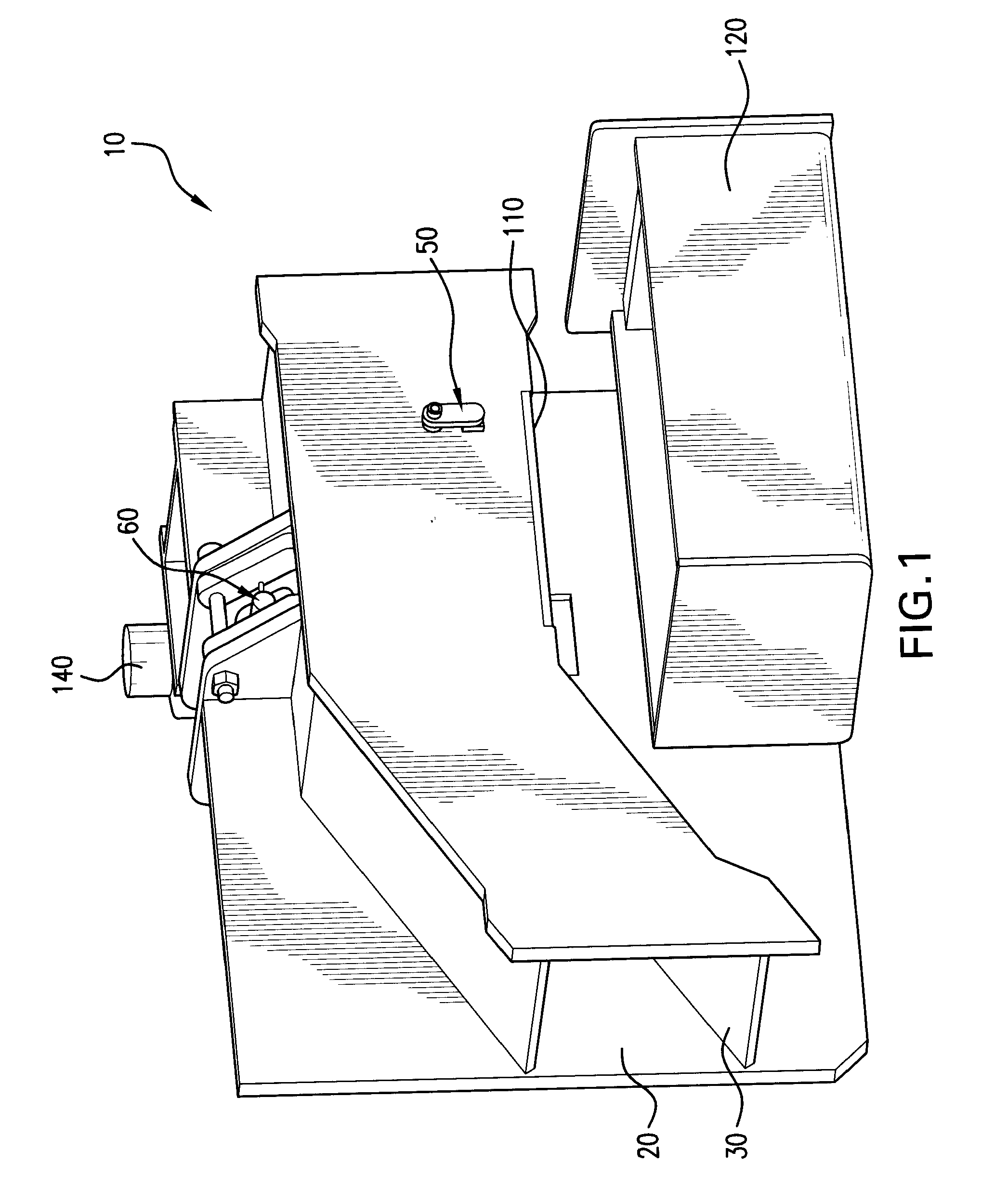Multiple-Use Vermin Electrocution Trap and Method
a multi-use, electrocution trap technology, applied in the field of animal traps, can solve the problems of reducing the breeding potential of rats, affecting the safety of use, and affecting the safety of use, and achieves the effect of simple, effective and safe us
- Summary
- Abstract
- Description
- Claims
- Application Information
AI Technical Summary
Benefits of technology
Problems solved by technology
Method used
Image
Examples
Embodiment Construction
[0065]According to the present invention there can be provided a vermin trap apparatus including:[0066]a housing;[0067]ingress means in the housing to enable vermin access to the housing interior;[0068]bait retention means at a location in the housing interior spaced from the ingress means, the bait retention means for receiving bait, the bait for attracting the vermin;[0069]movable path means between the ingress means and the bait retention means, the movable path means capable of rotatable, pivotable, or translational movement, or a combination thereof, from a first vermin supporting position, to a second vermin discarding position;[0070]a clamping member movable from a first position to a second vermin engaging position; the clamping member including one or more areas wired for passage of electric current;[0071]a containment region disposed below the movable path means;[0072]sensor means for detecting vermin presence on the path means and sending a vermin detection signal to a co...
PUM
 Login to View More
Login to View More Abstract
Description
Claims
Application Information
 Login to View More
Login to View More - R&D
- Intellectual Property
- Life Sciences
- Materials
- Tech Scout
- Unparalleled Data Quality
- Higher Quality Content
- 60% Fewer Hallucinations
Browse by: Latest US Patents, China's latest patents, Technical Efficacy Thesaurus, Application Domain, Technology Topic, Popular Technical Reports.
© 2025 PatSnap. All rights reserved.Legal|Privacy policy|Modern Slavery Act Transparency Statement|Sitemap|About US| Contact US: help@patsnap.com



